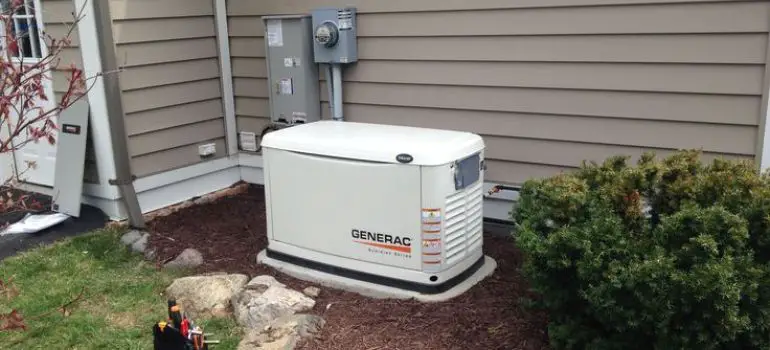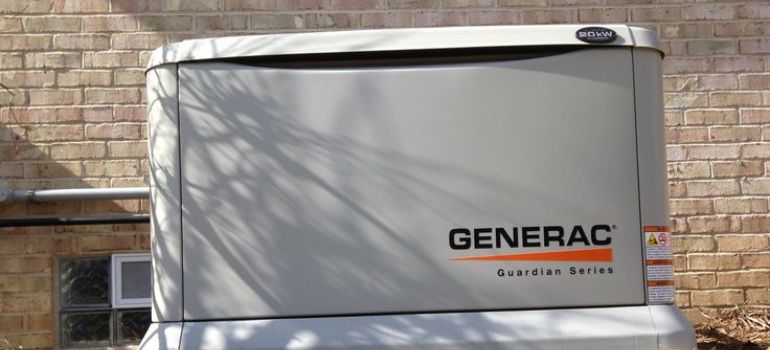Introduction
If you own a Generac generator, you’ve made a wise investment in ensuring your home’s power supply during emergencies. However, like any mechanical equipment, Generac generators require regular maintenance to function efficiently and reliably when you need them most. In this comprehensive guide, we will walk you through the steps to service your Generac generator effectively. From basic maintenance tasks to troubleshooting common issues, we’ve got you covered.
Understanding the Importance of Regular Maintenance
Regular maintenance is the key to ensuring your Generac generator operates smoothly. Neglecting maintenance can lead to decreased performance, costly repairs, or even complete generator failure during critical times.
Tools and Equipment You’ll Need
Before you begin servicing your Generac generator, gather the necessary tools and equipment. You’ll typically need a set of basic hand tools, a new oil filter, spark plug, air filter, and the recommended oil.
Safety First: Precautions Before Servicing
Safety should always be your top priority when servicing your generator. Make sure to disconnect the generator from the power source and follow all safety guidelines provided in the user manual.
Changing the Oil and Oil Filter
Regular oil changes are vital to maintaining your Generac generator’s engine in peak condition. Over time, the oil can become contaminated with impurities, affecting the engine’s performance. Follow these steps to change the oil and oil filter:
Tools and Materials You’ll Need:
- Appropriate oil for your generator (refer to your owner’s manual)
- A new oil filter
- Oil filter wrench
- Funnel
- Oil pan or container
- A socket wrench set
- A rag or paper towels
- Safety goggles and gloves
Safety Precautions:
- Turn Off the Generator: Before starting any maintenance, ensure your generator is switched off and disconnected from any power sources.
- Allow the Generator to Cool: Hot oil can cause burns. Allow the generator to cool down for at least 15-30 minutes before proceeding.
Step-by-Step Instructions:
- Locate the Oil Drain Plug:
- Consult your generator’s user manual to locate the oil drain plug. It’s usually positioned on the lower part of the engine.
- Position the Oil Pan:
- Place the oil pan or container under the oil drain plug to catch the old oil.
- Remove the Oil Drain Plug:
- Using a socket wrench, carefully loosen and remove the oil drain plug. Allow the old oil to drain completely into the pan.
- Remove the Old Oil Filter:
- Locate the oil filter, which is typically near the oil drain plug. Use an oil filter wrench to carefully loosen and remove the old oil filter. Be prepared for some oil spillage.
- Prepare the New Oil Filter:
- Before installing the new oil filter, apply a small amount of fresh oil to the rubber gasket on the top of the filter. This will create a better seal.
- Install the New Oil Filter:
- Screw the new oil filter onto the engine by hand. Tighten it with the oil filter wrench until it’s snug. Do not overtighten.
- Replace the Oil Drain Plug:
- Ensure the old oil has finished draining, then clean the drain plug and reinstall it. Tighten it securely but avoid over-tightening.
- Add Fresh Oil:
- Using a funnel to prevent spills, add the recommended amount of fresh oil to the engine. Refer to your owner’s manual for the correct oil capacity and type.
- Check the Oil Level:
- After adding the oil, wait a few minutes for it to settle, then check the oil level using the dipstick. Adjust as needed to reach the recommended level.
- Dispose of Old Oil Responsibly:
- Transfer the old oil from the oil pan to a suitable container for recycling or proper disposal. Many auto parts stores and recycling centers accept used oil.
- Clean Up:
- Wipe down any spilled oil and ensure the area is clean and free of oil residue.
- Record Maintenance:
- Keep a record of the date and mileage of your generator’s oil change. This helps you track future maintenance needs.
Replacing the Air Filter
The air filter prevents dirt and debris from entering the engine. A clogged air filter can reduce engine efficiency. Replace it as recommended by the manufacturer.
Inspecting the Spark Plug

The spark plug is responsible for igniting the fuel-air mixture in the engine. A faulty spark plug can cause starting problems and reduced performance. Inspect and replace it if necessary.
Checking the Battery
A healthy battery ensures reliable starting. Clean the battery terminals and check the voltage regularly.
Cleaning the Fuel System
Fuel system maintenance involves cleaning the fuel filter and lines. Contaminated fuel can cause engine problems.
Inspecting and Tightening Electrical Connections
Loose or corroded electrical connections can lead to power issues. Inspect and tighten all connections regularly.
Testing and Replacing the Voltage Regulator
The voltage regulator plays a critical role in maintaining a stable and consistent power output from your Generac generator. If you notice irregularities in voltage or suspect that your generator is not delivering the required power, testing and potentially replacing the voltage regulator may be necessary. Here are the steps to follow:
Tools and Materials You’ll Need:
- Multimeter
- Screwdrivers (Phillips and flathead)
- Replacement voltage regulator (if needed)
Safety Precautions:
- Turn Off the Generator: Before conducting any tests or performing maintenance, ensure that your generator is turned off and disconnected from any power sources.
- Allow the Generator to Cool: Let the generator cool down for at least 15-30 minutes before proceeding.
Testing the Voltage Regulator:
- Locate the Voltage Regulator:
- Refer to your generator’s user manual to find the location of the voltage regulator. It is usually mounted on or near the generator’s control panel.
- Access the Voltage Regulator:
- Depending on your generator model, you may need to remove a protective cover or panel to access the voltage regulator.
- Disconnect the Wires:
- Carefully disconnect the wires connected to the voltage regulator. Take note of the wire connections to ensure proper reassembly.
- Set the Multimeter:
- Set your multimeter to the voltage setting (typically in the AC voltage range).
- Check Voltage Output:
- Start the generator and measure the voltage output across the wires connected to the voltage regulator. The output should match the generator’s specified voltage. If the voltage is significantly higher or lower, the voltage regulator may be faulty.
- Load Test:
- Connect a load to the generator to simulate the generator’s typical operating conditions. Recheck the voltage output. A reliable voltage regulator should maintain a stable voltage even under load.
Replacing the Voltage Regulator (if Necessary):
- Shut Down the Generator:
- Turn off the generator and let it cool down if it was running.
- Remove the Faulty Voltage Regulator:
- Using a screwdriver, carefully remove the faulty voltage regulator from its mounting position. Keep track of any screws or fasteners for reassembly.
- Install the New Voltage Regulator:
- Attach the replacement voltage regulator to the same location using the screws or fasteners you removed earlier.
- Reconnect the Wires:
- Reconnect the wires to the new voltage regulator, ensuring that each wire is attached to the correct terminal.
- Test the Voltage Output:
- Start the generator and repeat the voltage output test using the multimeter as described earlier. Ensure that the voltage remains stable under load.
- Final Checks:
- Double-check all connections, ensuring they are secure and properly tightened.
- Replace Protective Cover or Panel:
- If you removed any protective covers or panels, reinstall them securely.
- Record Maintenance:
- Keep a record of the date and details of the voltage regulator replacement for future reference.
Troubleshooting Common Generator Problems
Generac generators are renowned for their reliability, but like any machinery, they can occasionally encounter issues. Here are some common generator problems and steps to troubleshoot them:
1. Starting Problems
Issue: Your generator won’t start when you need it.
Troubleshooting Steps:
- Check the fuel level: Ensure there’s enough fuel in the tank.
- Battery condition: A weak or dead battery can prevent the generator from starting. Charge or replace it if necessary.
- Fuel quality: Ensure the fuel is clean and not stale.
- Spark plug: Check the spark plug for signs of wear or damage and replace it if needed.
2. Low Power Output
Issue: The generator is running, but it’s not providing enough power.
Troubleshooting Steps:
- Load balance: Ensure that you’re not overloading the generator. Disconnect non-essential appliances.
- Dirty air filter: A clogged air filter can reduce engine performance. Clean or replace it.
- Fuel filter: A clogged fuel filter can restrict fuel flow. Replace it if necessary.
- Voltage regulator: Test and replace the voltage regulator if voltage fluctuations persist.
3. Overheating
Issue: The generator is running too hot.
Troubleshooting Steps:
- Check the cooling system: Ensure that the cooling fins and radiator are clean and not obstructed by debris.
- Ambient temperature: High outdoor temperatures can cause the generator to run hotter. Consider providing additional ventilation if needed.
4. Excessive Noise
Issue: Your generator is producing more noise than usual.
Troubleshooting Steps:
- Loose components: Check for loose nuts, bolts, or panels that could be vibrating and causing noise. Tighten them as needed.
- Exhaust system: Inspect the exhaust system for damage or loose parts, which can amplify noise.
5. Fuel Leaks
Issue: You notice fuel leaks around the generator.
Troubleshooting Steps:
- Turn off the generator and isolate it from any ignition sources.
- Identify the source of the leak. It could be a loose fuel line, damaged fuel tank, or a faulty fuel filter.
- Address the issue or contact a professional for repairs if necessary.
6. Oil Leaks
Issue: Oil is dripping from the generator.
Troubleshooting Steps:
- Turn off the generator and let it cool down.
- Locate the source of the oil leak. It might be a loose oil filter, damaged gasket, or overfilled oil reservoir.
- Tighten or replace the affected component as required.
7. Electrical Issues
Issue: You experience electrical problems, such as flickering lights or inconsistent power supply.
Troubleshooting Steps:
- Check the circuit breakers: Make sure the generator’s circuit breakers are not tripped.
- Electrical connections: Inspect all electrical connections for tightness and corrosion. Clean and tighten as necessary.
- Transfer switch: Test the transfer switch for proper operation. Faulty switches may need to be replaced.
Proper Storage and Winterizing
If you live in an area with cold winters, proper storage and winterization are essential to protect your generator from freezing temperatures.
Maintaining the Transfer Switch
The transfer switch connects your generator to your home’s electrical system. Regular checks and maintenance are crucial to ensure it functions correctly during power outages.
Regular Maintenance Schedule
Create a maintenance schedule to keep track of tasks and ensure your generator remains in top condition.
Additional Tips for Generator Maintenance
In addition to the essential maintenance tasks we’ve discussed, here are some extra tips to keep your Generac generator in top-notch condition:
1. Fuel Quality Matters
Always use clean and high-quality fuel for your generator. Stale or contaminated fuel can clog the fuel system and lead to performance issues. Consider using a fuel stabilizer to prolong fuel shelf life, especially if you don’t use your generator frequently.
2. Keep it Clean
Dust and debris can accumulate on your generator’s exterior and cooling fins. Regularly clean the generator’s surface with a soft brush or cloth, and use compressed air to clear debris from the cooling fins. A clean generator is more efficient and less prone to overheating.
3. Exercise the Generator
Generators benefit from regular exercise. Running your generator for about 15-30 minutes every month under a load helps keep it in good working condition. This exercise ensures that the engine, battery, and electrical components remain operational.
4. Monitor Oil Levels
Check the oil level in your generator’s engine before each use. Low oil levels can damage the engine. Ensure that the oil is at the recommended level and add more if necessary.
5. Professional Inspections
While you can perform many maintenance tasks yourself, it’s a good idea to schedule professional inspections at least once a year. An experienced technician can detect and address potential issues before they become major problems.
Conclusion
Servicing your Generac generator is essential for its longevity and reliability. By following these maintenance guidelines, you can enjoy uninterrupted power during emergencies and peace of mind knowing your generator is ready when you need it.
FAQs
The frequency of oil changes depends on the model and usage. Refer to your owner’s manual for specific recommendations.
Always use the oil recommended in your owner’s manual for optimal performance.
Regular maintenance ensures your generator operates efficiently and reliably when needed, preventing costly repairs.
While basic maintenance tasks can be done by homeowners, it’s advisable to consult a professional for major repairs or issues.
Follow the winterization guidelines in your owner’s manual or seek professional assistance to protect your generator from freezing temperatures.Follow the winterization guidelines in your owner’s manual or seek professional assistance to protect your generator from freezing temperatures.



